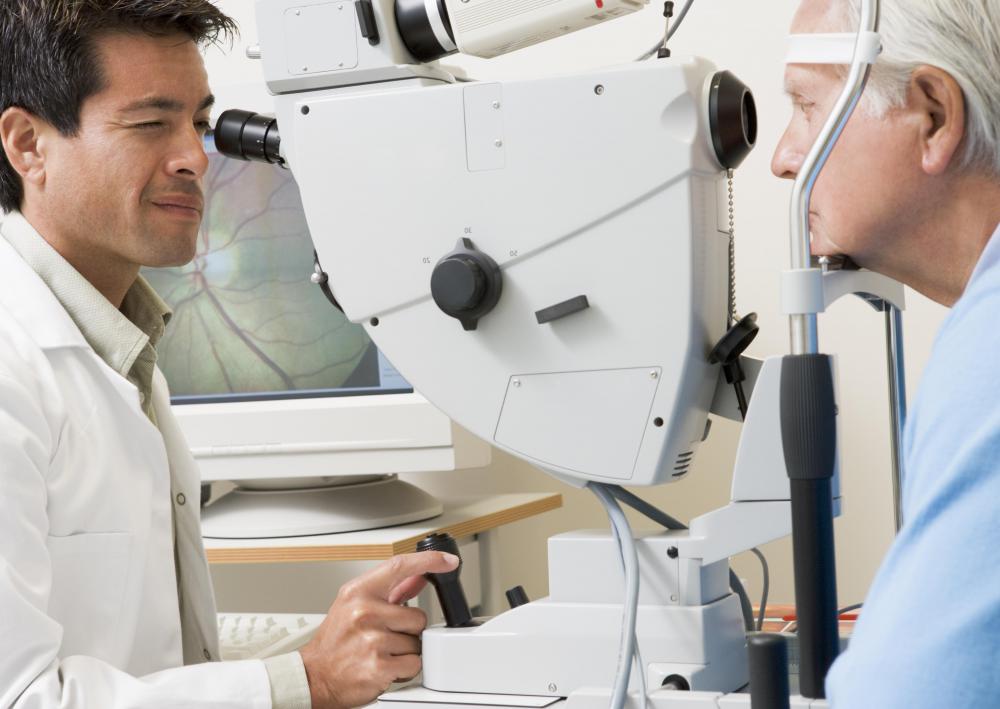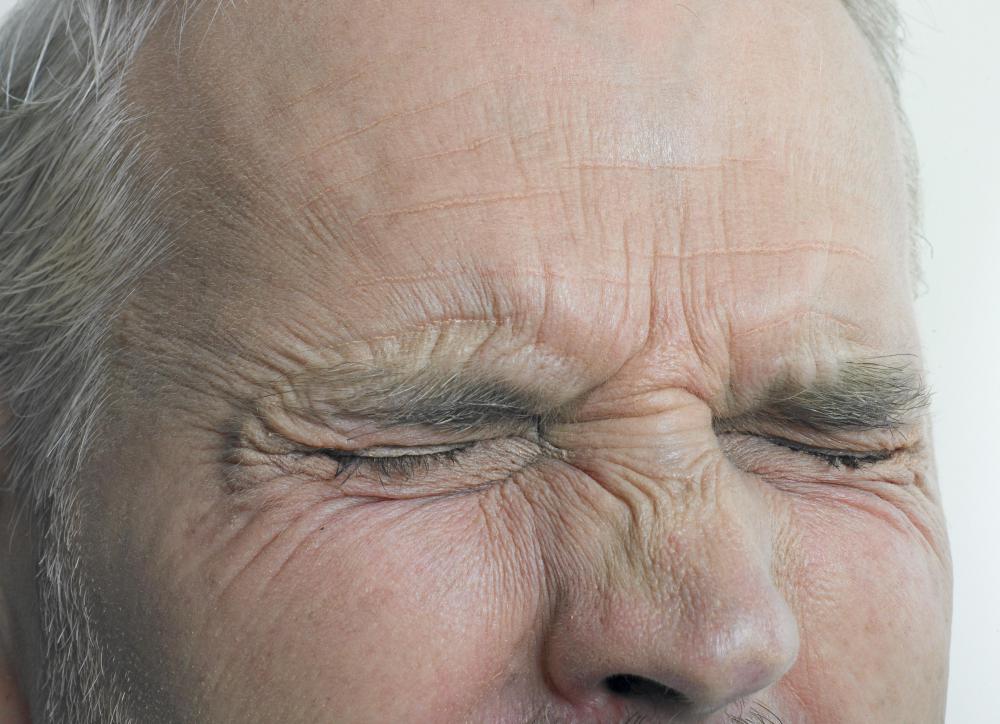At TheHealthBoard, we're committed to delivering accurate, trustworthy information. Our expert-authored content is rigorously fact-checked and sourced from credible authorities. Discover how we uphold the highest standards in providing you with reliable knowledge.
What is Blepharoptosis?
Blepharoptosis is a condition in which one or both upper eyelids sag, possibly interfering with vision. The disorder is most commonly seen in elderly people, as muscle fibers in the eyelids naturally weaken with advancing age. Newborns, children, and young adults may also experience blepharoptosis due to a severe infection, eye injury, tumor, or congenital defect. Doctors can usually correct the problem through simple surgical procedures, but underlying causes may require further treatment to prevent other health complications.
Age-related blepharoptosis tends to become more and more noticeable over the course of several years, and it is common for both eyes to be affected to some degree. Only one eye is generally involved when nerve and muscle tissues are weakened by a brain tumor, infection, or injury. Congenital disorders, which occur when muscle tissue never fully develops, are usually noticeable within the first year of life. It is possible for a congenital problem to affect one or both of an infant's eyes.

Blepharoptosis is not typically a painful condition, though a drooping eyelid may come into contact with the eyeball and cause irritation. As a result, a person may have chronic eye redness and produce excessive tears. A severely sagging lid can impair vision, an issue that is especially problematic if both eyes are involved. Congenital blepharoptosis precedes the development of a lazy eye in some infants when their vision is constantly obstructed on one side.

A primary care doctor or ophthalmologist can usually diagnose blepharoptosis simply by evaluating the physical appearance of the eyelids. If a doctor is unable to confirm that the disorder is related to old age or congenital problems, additional tests typically are performed to identify an underlying cause. Blood tests may reveal an infection or autoimmune disorder, and diagnostic imaging scans might suggest trauma to nerves, tumors, or abnormal muscle development. Once an accurate diagnosis has been made, the doctor can explain different treatment options.

Some instances of blepharoptosis can be managed without surgical intervention. Anti-inflammatory drugs may be able to relieve eye pain, and glasses with a specialized clasp can keep the affected eyelid held in place. Surgery is needed in the majority of cases, however, and modern procedures have proven very effective at relieving symptoms. A skilled surgeon can remove excess skin tissue and tighten the eyelid muscles. Vision tends to improve immediately after surgery, though additional surgery or specialized contact lenses may be needed if sight problems persist.
AS FEATURED ON:
AS FEATURED ON:















Discuss this Article
Post your comments